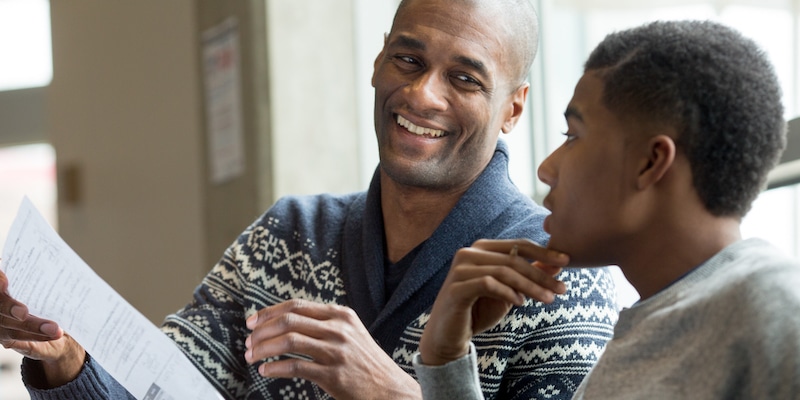Who were the teachers who made the biggest difference in your life? What did they do that made their impact so memorable? Chances are, it wasn’t their deftness at preparing you for state tests or aligning their curriculum to standards. Important as those things may be, they alone do not creates transformative experiences between students and teachers.
So, what makes a great teacher?
When I think back on the teachers who made the biggest difference in my life, they did two things for me. First, they were exceptional at what I once heard Steven P. Jones, an education professor at Missouri State, describe as a teacher’s most important job: making their students want to join the club of their academic discipline. With Ms. Farrier, my sixth-grade teacher, it was working in teams to build pyramids out of plaster and develop strategies to reenact Greek battles on the soccer field. With Mr. Webb, my AP Physics teacher, it was having my mind blown by the predictive precision of Newtonian physics when as a class we calculated and then measured out the precise spot where a block of wood would land after sliding off the roof of the school gym.
The second thing my most influential teachers did was believe in me and push me to live up to the potential they saw in me. With Mr. Lima, my middle school band teacher, it was picking me for our school jazz band and then coaching us to win awards at jazz competitions. With Mr. Johnson, my Freshman Honors English teacher, it was pushing me to be a deeply reflective reader and a clear and thoughtful writer as I wrestled my way through multiple iterations of essays on “the archetypical coming of age story” found in various works of classic American literature.
My personal experiences confirm findings from some of our research. The success of great teachers usually boils down to how well they use academics to fulfill students’ two main Jobs to Be Done: having fun with friends and feeling successful. To meet the first job, these teachers create fun group learning experiences that spark students’ natural curiosity and playfulness. For the second job, they give their students challenging work, then help them rise to those challenges and celebrate when they succeed.
Harder than it seems
Last week, I attended a convening that gave me new insight into the markers of great teaching. During the two-day event hosted by Education Reimagined, we discussed at length the distinctions and markers of student-centered learning. From those conversations, it occurred to me that in many cases, what makes great teachers great are their student-centered practices.
Unfortunately, in conventional school settings, being a student-centered teachers often means tireless work against barriers and constraints. They find time in between sessions of whole-class instruction to build relationships with their students. They make time outside of class to tutor students with particular learning needs. And they take on extra planning outside of school to manually differentiate their lessons.
What would a student-centered system designed to fulfill students’ Jobs to be Done look like? Summit Public Schools and its Summit Learning partner schools across the country use a strategy that combines online learning with project-based learning and experiential learning. Students cover much of their core content through mastery-based online learning and then work in teams on meaningful projects that require them to master reading, writing, math, science, and social science skills at a deeper and more engaging level. This integrates the delivery of curriculum with experiences that enable students to feel successful and have fun with their friends every day.
So, as we show our appreciation for teachers this week, let’s give them more than chocolates, gift cards, and lip service. Let’s redouble our commitment to innovating our instructional models in ways that give teachers more capacity for student-centered learning.
Photo Courtesy of Allison Shelley/The Verbatim Agency for American Education: Images of Teachers and Students in Action.


